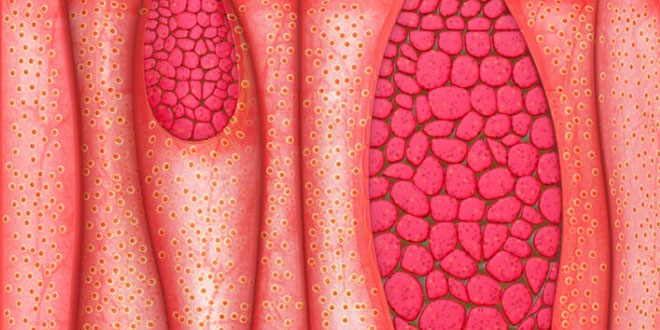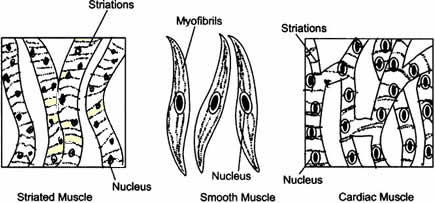Question: Where is apical meristem found?
Answer: Apical meristem is found at the tip of root or shoot of the plant.
Question: Which tissue makes up the husk of coconut?
Answer: The husk of coconut is made of sclerenchymatous tissue.
Question: What are the constituents of phloem?
Answer: Phloem is made up of four types of elements sieve tube, companion cells, phloem fibers and phloem parenchyma.
Question: Name the tissue responsible for movement in our body.
Answer: 1. Muscular tissue, 2. Nervous tissue, combination of both the tissues are responsible for movement in our body.
Question: What does a neuron look like?
Answer: A neuron consists of a cell body with a nucleus and cytoplasm, from which long thin hair like parts arise. Each neuron has a single long part called the axon, and many small, short branched parts called dendrite. An individual nerve cell is called neuron, it may be up to a meter long.
Question: Give three features of cardiac muscles.
Answer: Feature of cardiac muscles
- Heart muscles (cardiac muscles) are cylindrical, branched and uni-nucleated
- They are striated muscle fibers.
- They are involuntary muscles, cannot be controlled by us.
Question: What are the Junctions of areolar tissue?
Answer: Areolar tissue are connective tissues found in animal. It is found between skin and muscles, around blood vessels and nerves and in the bone marrow.
It fills the space inside the organs, supports internal organs and helps in the repair of tissues.
Question: Define the term “tissue”.
Answer: Group of cells that are similar in structure and perform same function is called a tissue.
Question: How many types of elements together make up the xylem tissue? Name them.
Answer: The xylem is made up of vessels, trachieds, xylem fibers and xylem parenchyma.
Question: How are simple tissues different from complex tissues in plants?
Answer: Simple tissues are made up of one type of cells which coordinate to perform a common function. Complex tissues are made up of more than one type of cells. All these coordinate to perform a common function.
Question: Differentiate between parenchyma, collenchyma and sclerenchyma on the basis of their cell wall.
Answer:
- Parenchyma: The cells have thin cell walls made up of cellulose.
- Collenchyma: The cells have cell walls thickened at the comers due to pectin deposition.
- Sclerenchyma: Their walls are thickened due to lignin deposition.
Question: What are the functions of stomata?
Answer: The outermost layer of the cell is called epidermis and is very porous. These pores are called stomata. These stomata help in transpiration and exchange of gases.
Question: Diagrammatically show the difference between the three types of muscle fibres.
Answer:
Striated muscles:
- They are connected to bones (Skeletal muscles).
- They are voluntary muscles.
- The cells are long, cylindrical with many nucleus and are unbranched.
Smooth muscles
- They are found in alimentary canal and lungs.
- They are involuntary muscles.
- They are spindle in shape and have single nucleus.
Cardiac muscles
- They are found in heart.
- They are involuntary in action.
- They are branched and have one nucleus.
Question: What is the specific function of the cardiac muscle?
Answer:
- Cardiac muscles cells are cylindrical, branched and uni-nucleated.
- They are involuntary muscles.
- They show rhythmically contraction and relaxation throughout life.
- Their rhythmic contraction and relaxation helps in pumping action of heart.
 Class Notes NCERT Solutions for CBSE Students
Class Notes NCERT Solutions for CBSE Students







